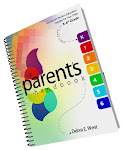Your Child and Technology: What Your Kindergartner Needs to Know Part 1
Your Child and Technology: What Your Kindergartner Needs to Know
Some schools and parents are using technology to boost reading, math, and science skills, but it remains optional for kindergarten learning.
By GreatSchools Staff
Is a high-tech kindergarten the best?
Does your child’s classroom have enough technology? Should it have any at all? When it comes to the modern-day kindergarten class, these questions are more easily asked than answered. Given that young children's brains and bodies grow best when all of their senses are engaged – constructing a city out of blocks, navigating a climbing structure, dressing up as a superhero – we know that kindergarten classrooms need all the tools of the trade for rich sensory play.
What role should technology play? As a rule, kindergartners shouldn't be spending their days (at home or at school) planted in front of a glowing screen. But there is outstanding technology available that can support your child's academic growth. Technology in kindergarten can also start your child on the road to technological literacy: knowing to use tools to solve problems. Here’s a primer for what's available and how it can help your child's learning.
Are there any standards for technology in kindergarten classrooms?
The Common Core Standards Initiative issued in 2010 – and adopted by most states – spells out several technical skills that a kindergartner should have, at least ideally. (Many states also follow the National Educational Technology Standards for Students.) The reality is that most kindergartners use technology minimally. Your kindergartner may have one or more computer workstations in the classroom, visit a computer lab once a week, or not use technology at all. If technology is a regular part of the classroom, your child might use free time to play a kindergarten-level reading or math game, listen to a story on tape, or record her own story on the computer. It all depends on the school's philosophy and resources, as well as how much, or little, the teacher decides to use technology as an early learning tool.
Technological tools of the trade
Here are some things you might find in your child's classroom or school:
•Computer(s) with access to the Internet (and Internet safeguards) and a printer
•An interactive whiteboard
•Video and still digital cameras
•One or more tablets
•Educational software that reinforces reading and math skills
•Interactive story books on a computer
•A large-screen display connected to a computer that the teacher uses to demonstrate a lesson to the whole class. (If none is available, the teacher may have smaller groups gather around the computer to introduce a lesson or new computer skill.)
At the kindergarten level, if your child's classroom doesn't have any of these bells and whistles, there’s no need to panic. Kindergartners don't need to know how to use a computer; there's plenty of time in upper grades for students to acquire these skills. If technology is part of your child's classroom, ideally it's used not for "play time" but to strengthen skills in reading, writing, math, and science.
Tomorrow will have more tips for the technology that your child should know.










0 comments:
Post a Comment